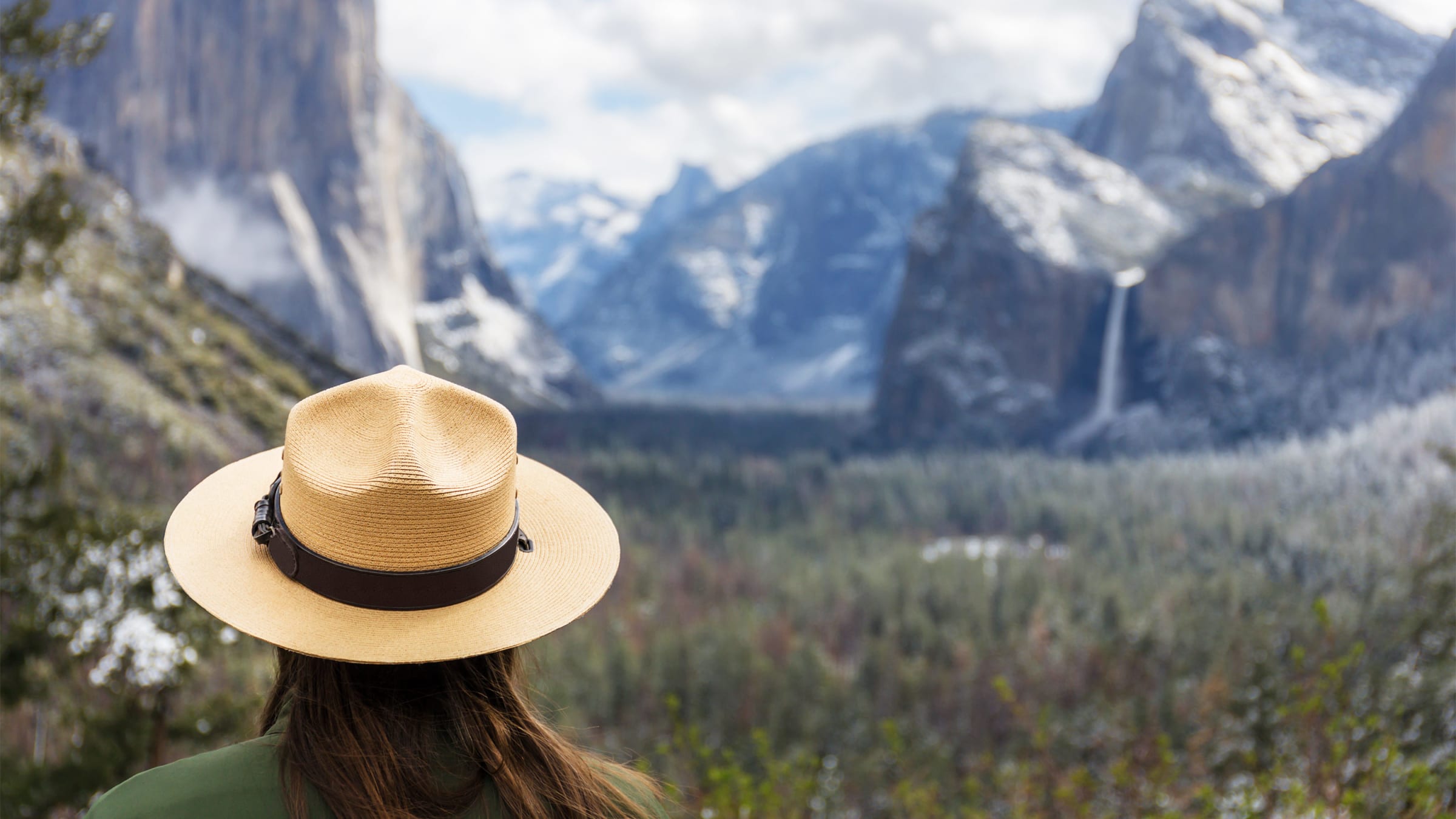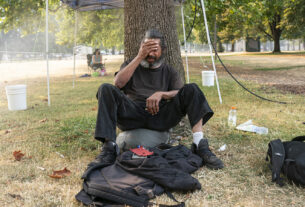
Major parks remain open. And despite rangers and employees testing positive, the government is encouraging use of the parks as a social-distancing solution.
Frustrated by what he considered inadequate answers about why some staff could telework while others had to show up to work, Lyndon B. Johnson Historic Park maintenance worker Trevor Wright took matters into his own hands—with an all-staff email.
“No one has ever died because they were not able to see LBJ’s ranch or ancestral settlement on any given weekend,” Wright wrote of the Texas-based park known colloquially as the “White House of the South.” He sent the email to his superintendent Suzanne McDonald and cc’d hundreds of agency staff across the country for good measure.
“[I] question the perceived benefit of keeping the park open to visitation in any capacity, given the gravity of the risk involved… Be a dutiful servant of the public trust. Protect your employees. Protect your visitors. Close the park.”
Wright signed the email: “Keep bailing.” His account was soon thereafter suspended pending internal review.
Farther north in Alaska, exasperated with his bosses and fearing the National Park Service’s lacking response to the COVID-19 outbreak, Human Resources employee Dustin Stone let rip a string of expletives followed by a quick resignation.
After seven months working at Alaska’s Klondike Goldrush Historic National Park, Stone no longer wanted to risk his life, or those of others in his small community, for his job.
“Being told over and over again that, ‘The system is working, trust the system, it’s taking its time,’ was like being given the middle finger over and over again,” Stone said of his bosses in an interview. “There is no time for bureaucracy right now when hours are so important.”
As COVID-19 continues to take its toll in the U.S, fear of exposure is leading typically rank and file national park staffers to speak out in an unusual display of agency-wide pushback to the Trump administration’s ongoing policy that is keeping a majority of the more than 400 national parks open during the pandemic.
Concerns are that NPS and Interior Department leadership in Washington are not taking the public health threats of coronavirus seriously, and are unfairly putting employees, visitors and the surrounding local communities at risk by continuing to keep open parks. Just over 100 of the 419 national parks are currently closed.
“As long as parks stay open to visitors, those staff are going to have to take unnecessary risks themselves and for the community they live in,” said Stone, who lives in the 1,000-person town of Skagway. Geographically isolated, the seasonal community receives a majority of its visitors via cruise ships in the summer. Skagway has no doctor and a single ventilator, according to Stone.
“We do have a significant at-risk population,” he said. “Unlike a lot of places, those aren’t faceless statistics here. I know most of them by name. They are my neighbors.”
A majority of the criticism aimed at the park service has been its slow and inconsistent messaging, which at times has paralleled the murky guidelines of Trump’s White House. More recently, frustration has been pegged at the services reluctance to close down some of the most iconic and high volume parks, and to offer staff and the public honest information regarding coronavirus cases there.
Parks were officially told on March 15 that supervisors could decide on their own whether to close partially or completely any national park, based on the Center for Disease Control and local health guidelines. Days later on March 18 Interior Secretary David Bernhardt announced the government would be waiving all park entrance fees across the board to offer the public the chance to “embrace nature and implement some social distancing.” The move sent park employees scrambling to handle new crowds of people at a time when they were begging to close. That remains the case for park employees at the Grand Canyon, who have tried in vain to close the park and been stopped by Washington officials.
“We feel our boss is not meeting up with our pleas… It’s political, to keep up the image,” said one Grand Canyon ranger, who spoke on the condition of anonymity.
The employee said the park, which on Friday significantly closed trails and visitor access, still is experiencing countable visitation from those looking to get outside. “I feel people’s idea of the Grand Canyon is that you can isolate, but there’s two entrances. They are all going to the same view stations and same trails. It funnels people to the same spots,” said the ranger.
“The way we‘ve been putting it to people is: ‘Man you want to be here at a happy time. We love this place. We want you to be here when we’re comfortable and everyone is not afraid to look at each other.’ It’s just a really stressed-out, on-edge feeling.”
A Grand Canyon concession employee has tested positive for coronavirus, acting park superintendent Mary Risser told staff Monday in an email reviewed by The Daily Beast, but the Grand Canyon remains open. The Interior Department has denied requests by park staff, the neighboring Coconino County Board of Supervisors and the local Navajo Nation to shut down the park due to health concerns. Arizona Rep. Raul Grijalva (D), who chairs the House committee that oversees the Interior Department, has also requested the park’s closure.
Liz Archuleta, a Coconino County Board Member who helped spearhead the letter to the Interior Department, argued that closure of the Grand Canyon must be imminent. “We consulted with business owners and with park officials and there is agreement that the Grand Canyon needs to be temporarily closed to stop the spread of the coronavirus. This is a public health imperative,” she said. “I do not see a legitimate reason to deny the request.”
On Monday, the county had documented 73 cases of coronavirus and three deaths. The Navajo Nation had documented 32 cases in Coconino County.
After their first denial, Archuleta said the board along with county health officials submitted a second request to Interior late last week, and as of Tuesday still await an answer. A separate request they sent to Bernhardt to close a neighboring park in Arizona last Wednesday was quickly granted–a decision Archuleta found perplexing.
“If the Flagstaff Area National Monuments were granted [closure] why not the Grand Canyon? It was the exact same argument,” she said.
NPS spokesperson Stephanie Roulett said Tuesday that the agency has not made a decision about closing the Grand Canyon. “However, the park has made significant changes to operations in order to implement CDC and state/local health guidance,” she said, adding that Arizona state guidance has not changed since those measures were implemented now has the state’s public health service asked for closures.
As of Monday, the NPS had recorded at least seven cases of employees who tested positive for coronavirus. One of those cases was confirmed at Great Smoky Mountains National Park—one of the country’s most visited national park that straddles the border between North Carolina and Tennessee. The park closed down entirely last week. (NPS is not counting the Grand Canyon cases in its official count because it wasn’t a park employee.)
Yet, the agency has adopted an increasingly tightlipped policy on sharing details about COVID-19 positive cases. An email sent to park superintendents and managers last Friday offered a “friendly reminder” to staff, that if asked to confirm coronavirus cases in a specific park, rangers were to respond to media requests with the generic: “To ensure employee privacy, the NPS will not comment on individual cases.”
Smoky Mountain National Park Spokesperson Dana Soehn on Saturday said she could no longer confirm the coronavirus case she had previously confirmed to Tennessee newspaper The Citizen Times, citing the new policy.
For Kristen Brengel, vice president of government affairs at the National Parks Conservation Association, the new NPS policy poses a public health concern.
“The public, especially those who have been to those parks, should know if any positive cases can be traced back to the parks,” Brengel said.
In the past few weeks Brengel said she’s spoken with a number of rangers across the country who are worried about infection.
“Some of these staff people don’t even go home at night because they are afraid they have had too much contact—so they are staying in employee housing instead,” she said.
“Can you just imagine, this is your job. You want to keep your job, but at the same time, you’re risking your health.”
The fear is increased by the fact that many parks lack the necessary medical equipment to ward off coronavirus exposure, namely masks. A March 21 email from Stacy Wertman, Chief of Safety, Health, and Wellness to park superintendents in the pacific west region said management must reconsider daily operations based on the limited availability of safety supplies, adding that no requests could be filled at the time.
“We understand operations will be negatively affected by the lack of resources, especially without personal protective equipment. This should be factored in to your operational risk assessment as we ensure our employees health and safety are protected,” the email said.
Wertman also requested that extra protective items be sent back to be distributed amongst parks in need, listing hand sanitizer, surgical gowns, N95 masks and latex gloves as examples.
The Interior Department this week began showing signs of attempts to wrangle in outspoken employees–those who have spoken to the media or posted their frustrations online.
A memo from Bernhardt to all staff Monday warned that “failure to work earnestly at this critical time would be disruptive to our Department’s important mission.” A separate Tuesday memo from Interior’s Chief of Staff Todd Willens titled in part, “Prohibited Partisan Activity Reminder,” warned NPS staff and their families to be mindful of expressing political opinions–especially online. “It is imperative that department employees maintain the public’s trust that the federal programs and activities undertaken by the department will continue to be administered in a non partisan manner,” the memo read.
For employees, such emails are an incredibly sobering reality that reinforce concerns about what it will ultimately take for the agency to shut down national parks entirely.
“I don’t want to watch my colleagues and co-workers and subordinates die. I’m doing, and every chief I know is trying, to do stuff to prevent that. But no one is coming to help us,” said one Northern California chief park ranger.
“When we landed on the beach in Normandy we knew we were going to take casualties, and that’s what this looks like.”



